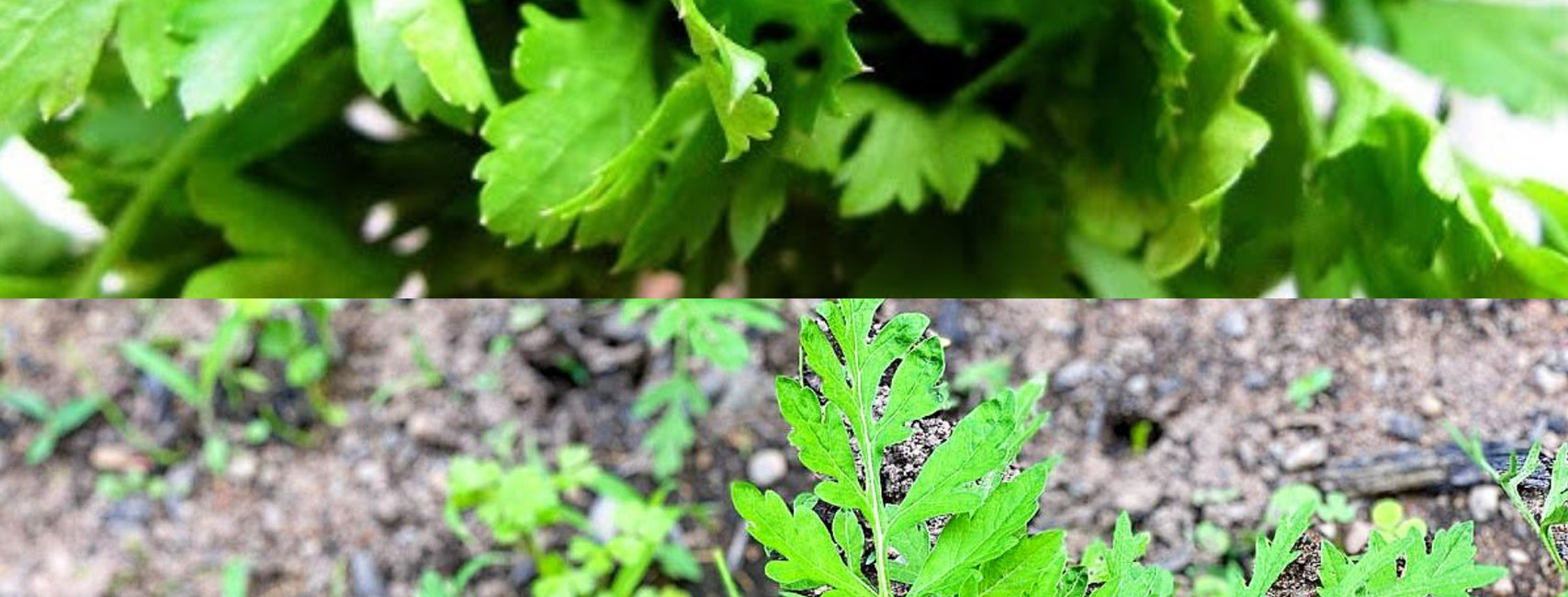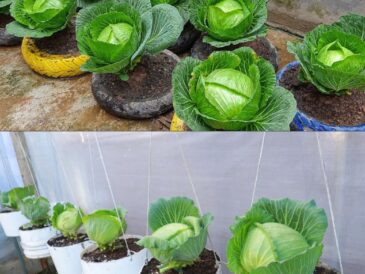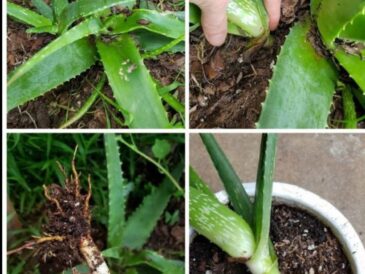Parsley is one of the most versatile herbs that can elevate the flavor of numerous dishes. Packed with nutrients and known for its health benefits, parsley is a must-have in any culinary garden. While it is often considered an outdoor herb, growing parsley at home all year round is not only possible but can lead to a bountiful harvest. In this detailed guide, we will explore everything from the benefits of growing parsley to soil preparation, sowing, maintenance, and harvesting.
Benefits of Growing Parsley
Before diving into the steps of growing parsley, let’s take a moment to appreciate why you should consider growing this herb at home.
Nutritional Value
Parsley is a nutrient powerhouse, rich in vitamins A, C, and K. It also contains antioxidants and anti-inflammatory properties that contribute positively to overall health. Adding fresh parsley to your meals not only enhances flavors but boosts nutritional intake as well.
Culinary Versatility
From garnishes to salad ingredients, and from soups to sauces, parsley can be used in countless recipes. Its mild flavor makes it an ideal companion for more robust ingredients.
Aesthetic Appeal
With its vibrant green leaves and delicate structure, parsley can also serve as a beautiful addition to your home or garden.
Freshness Year-Round
Having parsley at your fingertips means you can enjoy the freshest taste in your cooking. No longer will you have to rely on store-bought herbs that may have lost their potency during transportation.
Choosing the Right Variety
Before you start your parsley-growing journey, it’s essential to choose the right variety. There are two main types of parsley:
1. Curly Leaf Parsley
This variety has tightly curled leaves and a mild flavor. It’s often used as a garnish, as it adds a decorative element to dishes.
2. Flat Leaf (Italian) Parsley
This variety has broader, flatter leaves and is preferred by chefs for its more robust flavor. Flat-leaf parsley is ideal for cooking and can enhance the taste of various dishes.
When growing parsley at home, consider which type you prefer based on your culinary needs.
Planting Conditions
1. Location
Parsley thrives in a sunny environment but can also tolerate partial shade. When growing parsley indoors, place it near a south or west-facing window that receives ample sunlight.
2. Soil Requirements
Parsley thrives in loamy, well-draining soil rich in organic matter. The ideal pH level ranges from 6.0 to 7.0. You can mix compost into your potting mix to create the perfect environment for growth.
3. Containers vs. Garden Bed
You can grow parsley in both containers and garden beds. Containers allow for better control over soil quality and drainage, making them an excellent choice, especially for indoor gardening. If you opt for a garden bed, ensure it has well-draining soil and good sunlight exposure.
Growing Parsley from Seeds
Step 1: Prepare the Seeds
Parsley seeds have a hard outer shell, which may hinder germination if not treated properly. To improve germination rates, soak the seeds in water for 24 hours before planting. This process will soften the seed coat and stimulate growth.
Step 2: Sowing Seeds
If you’re growing parsley indoors, use a seedling tray or small pots. Fill them with the prepared potting mix and sow the seeds about 1/4 inch deep. If you’re planting in a garden bed, space the seeds about 10-12 inches apart to allow for growth.
Step 3: Watering
After sowing, water the soil thoroughly, ensuring it is damp but not soggy. Maintain consistent moisture, as parsley seeds can take 2 to 4 weeks to germinate. Cover the pots or trays with plastic wrap to create a greenhouse effect, which will help retain moisture. Remove the cover once the seedlings emerge.
Growing Parsley from Transplants
If you prefer not to start from seeds, you can also grow parsley from seedlings or transplants. Here is how:
- Visit your local nursery or garden center and purchase healthy parsley seedlings.
- Choose a suitable pot or planting area with well-drained soil.
- Dig a hole that’s slightly larger than the root ball of the seedling.
- Place the seedling in the hole, making sure the top of the root ball is level with the soil surface.
- Water thoroughly to settle the soil around the roots.
Maintenance for a Rich Harvest
Once your parsley plants are established, regular maintenance is key to achieving a rich harvest.
1. Watering
Parsley enjoys moist soil but is sensitive to overwatering. Water plants deeply once a week, adjusting based on weather conditions. If your parsley is grown in pots, check moisture levels regularly, as container plants can dry out faster.
2. Fertilizing
Feed parsley with a balanced liquid fertilizer every 4 to 6 weeks during the growing season. Alternatively, you can amend the soil with compost before planting and use it as a slow-release nutrient source.
3. Pruning
Regularly trimming parsley encourages bushier growth and prevents it from becoming leggy. Snip off leaves as needed for cooking, but ensure you leave at least two-thirds of the plant intact, so it can continue to grow.
4. Pests and Diseases
Parsley is relatively pest-resistant, but keep an eye out for aphids and caterpillars. If infestations occur, consider using organic pest control methods like neem oil. Additionally, ensure good air circulation to prevent diseases such as damping off and fungal infections.
Growing Parsley Indoors vs. Outdoors
Indoor Growing
When growing parsley indoors, ensure the plants receive around 6-8 hours of light daily. If natural light is insufficient, consider investing in grow lights. Indoor parsley may also benefit from higher humidity levels, so consider using a humidifier.
Outdoor Growing
For outdoor growing, choose a spot that receives full sunlight, especially in cool climates. If you live in an area with harsh winters, you may need to bring pots indoors or cover garden beds with mulch for protection.
Harvesting Parsley
When to Harvest
You can begin harvesting parsley leaves once the plants are established and have reached a height of 6-8 inches, usually around 3-4 months after planting, depending on the variety and growth conditions.
How to Harvest
- Cutting Leaves: Use scissors or pruning shears to snip off the outer leaves at the base of the stem. Avoid cutting the central stem, as this will allow for continued growth.
- Harvesting Regularly: Regular harvesting is crucial. Remove leaves often to promote bushier growth and prevent the plants from bolting (going to seed), which commonly occurs in response to heat.
Storing Harvested Parsley
Fresh parsley can be stored in several ways:
- Refrigeration: Place parsley stems in a glass of water and cover loosely with a plastic bag. This method can keep it fresh for a week.
- Freezing: Chop fresh parsley and store it in an ice cube tray filled with water or olive oil. Once frozen, transfer the cubes to a freezer bag for easy use later.
Using Parsley in Cooking
Fresh parsley can be added to salads, soups, stews, sauces, and as a garnish for various dishes. Its subtle flavor pairs exceptionally well with garlic, lemon, and olive oil, enhancing the overall taste of your culinary creations.
Troubleshooting Common Issues
While growing parsley is generally straightforward, you may encounter a few common issues:
- Leggy Growth: This occurs when plants don’t receive enough light. Move them to a sunnier location or use grow lights.
- Yellowing Leaves: This can be a sign of overwatering or nutrient deficiency. Adjust watering and consider fertilizing.
- Flowering (Bolting): If your parsley flowers, it indicates the plant is stressed or has reached maturity. Remove flowering stems to prolong leaf production.
- Pest Infestation: Use organic methods to control pests and ensure regular checks for early detection.
Conclusion
Growing parsley at home all year round is an enriching experience that not only enhances your culinary dishes but also provides nutritional benefits and aesthetic pleasure. Whether you choose to grow from seeds or transplants, understanding the ideal conditions, maintenance, harvesting techniques, and potential issues will ensure rich harvests throughout the year.
The journey from seed or seedling to fresh parsley in your kitchen is rewarding. So, gather your materials, plan your garden, and enjoy the simplicity and fulfillment of growing this delightful herb in your home, enriching your meals and elevating your cooking skills. Embrace the wonderful world of home gardening and relish the aromatic and flavorful parsley for all your culinary adventures!




